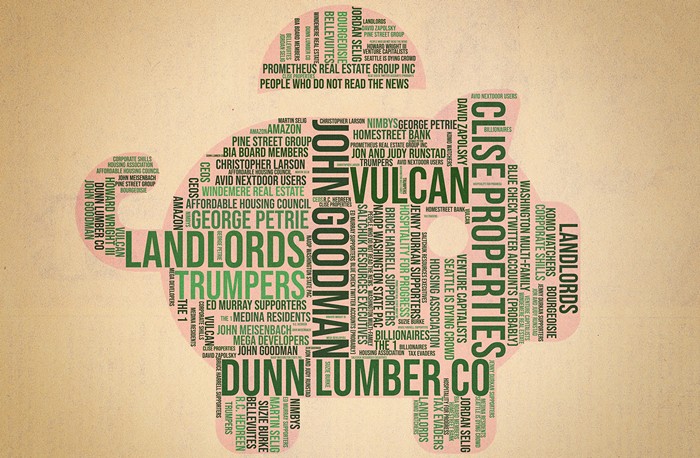City Studio Vancouver, an organization that sees the city as a classroom, recently transformed "two parking spaces on Commercial Drive into green space for the day."
The purpose of this intervention was, of course, to wake up, even for a moment, a couple of parking spaces from the deep sleep of a bad habit. Parking spaces are not a solution but a serious problem, a major waste of urban space, and, as Jeff Speck points out in Walkable City (basing the claim on research by Donald Shoup, the parking professor), are often subsidized by shoppers, businesses, and the state...
The first step to understanding how parking works is to get a grasp of how much it costs and who pays for it. Because it is so plentiful and often free to use, it is easy to imagine that it costs very little. But this is not the case. The cheapest urban parking space in America, an 8½-by-18-foot piece of asphalt on relatively worthless land, costs about four thousand dollars to create—and not much urban land is worthless. The most expensive parking space, in an underground parking garage, can cost forty thousand dollars or more to build. Parking spaces under Seattle’s Pacific Place Shopping Center, built by the city, cost over sixty thousand dollars each.* In between those extremes is the standard aboveground urban parking structure, which can usually be built for between twenty and thirty thousand dollars per space.Shoup actually believes that the best thing to do with parking is to turn it over completely to the market. This will help end the subsidies and reveal the actual cost of this nonsense to drivers. And a sharp increase in the price of parking will eventually translate into a decrease in the number of drivers going up and down and all around town. And if the number of drivers falls significantly, our oceans will not get much more fucked up than they already are (read the excellent Seattle Times report on the state of our oceans). Let's think about missing green spaces...
...Shoup calculates that “the cost of all parking spaces in the U.S. exceeds the value of all cars and may even exceed the value of all roads.” There are also the ongoing costs of taxes, management, and maintenance. If the journal Parking Professional is to be believed, more than a million Americans make their living in some aspect of the “parking profession.” These people have to be paid. Somewhat conservatively, and based on the study of hundreds of parking lots, Shoup estimates the monthly cost of a structured parking space to be at least $125 per month,6 or roughly $4 per day.
This circumstance exists all over the United States, principally because cities and other sponsors keep parking prices artificially low. Because there are so many parking spaces, this cumulative subsidy was calculated a decade ago at between $127 billion and $374 billion a year, which puts it in the range of our national defense budget. This number seems preposterous, until you consider that the typical parking space in the United States is not in a pay-to-park garage at all, but alongside a condo cluster, inside an office park, or in front of a Walmart, where admission is free. If parking is “free” or underpriced in so much of the United States, who is actually paying for it? The answer is: we all are, whether we use it or not. Shoup puts it this way: Initially, the developer pays for the required parking, but soon the tenants do, and then their customers, and so on, until the price of parking has diffused everywhere in the economy. When we shop in a store, eat in a restaurant, or see a movie, we pay for parking indirectly, because its cost is included in the price of merchandise, meals, and theater tickets. We unknowingly support our cars with almost every commercial transaction we make, because a small share of the money changing hands pays for parking...














